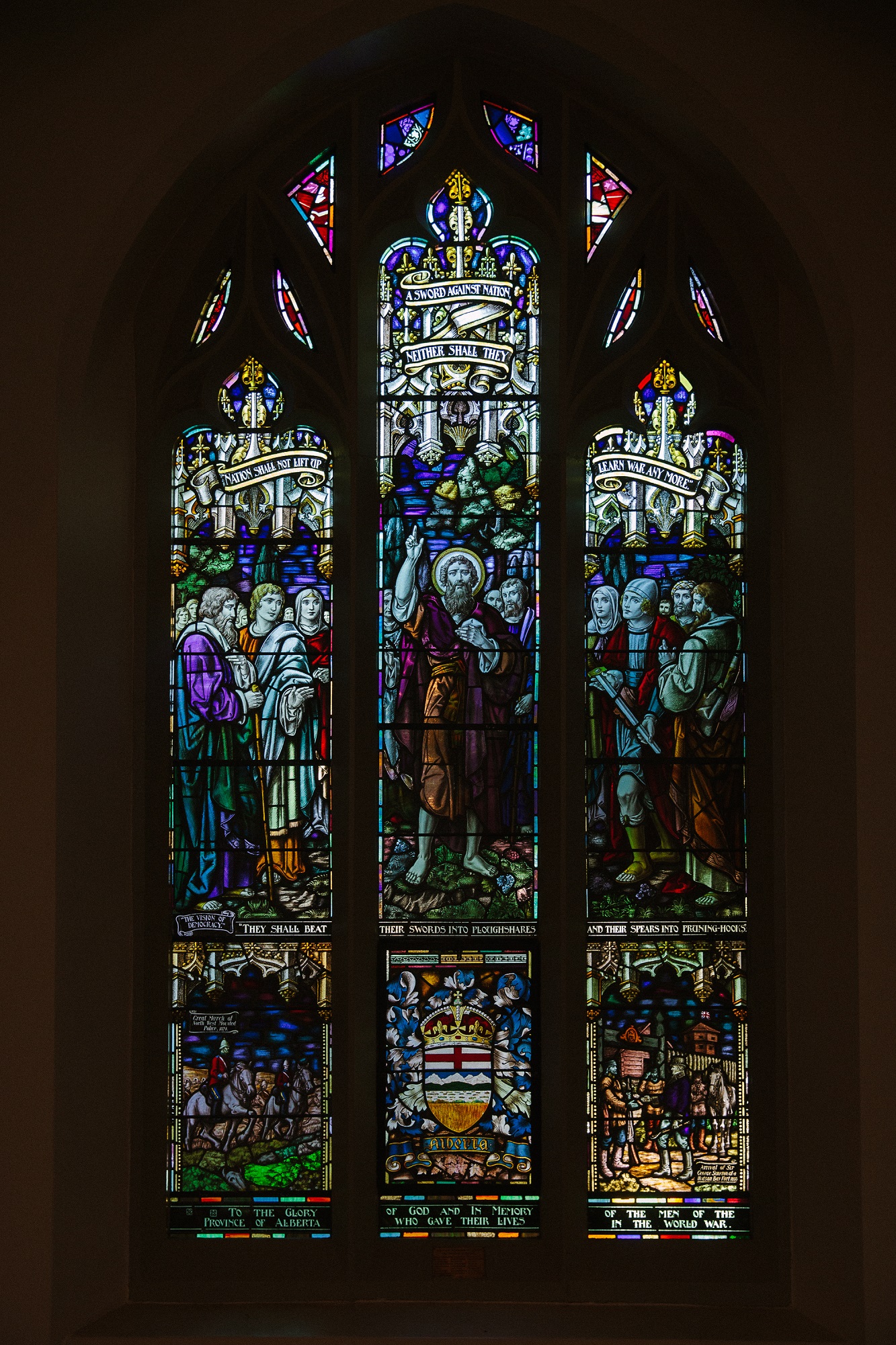Canadian Memorial Chapel was born in the hearts of private soldiers in the First World War who, guided by a sergeant, formed a working party to bury six of Canada's war dead. On a November night of 1915, in the Ypres Salient, France, one of the soldiers said to Reverend Lieutenant-Colonel (Lt.-Col.) George Fallis, CBE, ED DD: "Padre, after the war is over some chaplain should build a memorial in Canada in memory of fellows like these who have given their all." From that moment on, he would never lay away their beloved dead without the idea of a memorial chapel in his mind.
On his return to Canada he was advised by Reverend S.D. Chown, DD, General Superintendent of the Methodist Church, to go to Vancouver and choose a site in Shaughnessy Heights facing the eternal hills to erect the chapel of his dreams. He arrived in Vancouver in May 1920, to a willing congregation and plans were quickly laid.
Lt.-Col. Fallis' friend Chris Spencer, CBE, advised him that in order for there to be national significance to the chapel, he should go across Canada and interview lieutenant governors, premiers, statesmen and leaders of each province, asking them to underwrite the windows. Alberta was the ninth province he visited.
In Edmonton, Lt.-Col. Fallis met with Judge William Legh Walsh whose son was a lieutenant in his old battalion of 1915. Judge Walsh sent Lt.-Col. Fallis to the Premier, Mr. Brownlee, with his blessing. When the Premier heard of the great success across Canada he smiled and said: "Well, it certainly is up to Alberta to do her part." He drew up a list of those that he thought should be interviewed, and commended Dr. Edgar Allin. He was the first subscriber to the Alberta window after the Premier. After being told one hundred dollars would be his share, he said, "Oh no, I should give at least two hundred."
Dr. Allin telephoned one of the leading merchants of Edmonton, W.T. Henry, and told him to meet with Lt.-Col. Fallis. Mr. Henry asked Lt.-Col. Fallis to be brief, but as the concept of Canadian Memorial Chapel unfolded, his interest grew, and Lt.-Col. Fallis asked him to subscribe at least one hundred dollars to the Alberta window. He opened his desk and wrote a cheque for two hundred. With a twinkle in his eye he said, "You're the only man who ever pried two hundred dollars out of me and made me feel actually good."
Mr. Brownlee advised that Patrick Burns, the elder business man of Alberta, would be a better choice to provide names to be interviewed in Calgary. Patrick was a devout Roman Catholic and had just recently been given an outstanding honour by the Pope. Lt.-Col. Fallis conferred with the Honourable R.B. Bennett who said that Patrick had long since outgrown parochial-mindedness and that he counted some of his greatest friends among Protestants. Patrick was impressed with the Canadian Memorial Chapel and said if Lt.-Col. Fallis would return the next day he would give him a list of those whom he thought should be asked to underwrite Calgary's share of the Alberta window. The following day Patrick said he had thought a great deal about the whole matter and felt that the names he should give would be those of men who had made the greatest contribution in the development of Calgary and Southern Alberta. "I have drawn up a list," he said with a quiet smile, "but alas they are all dead, so I have written a cheque for seven hundred dollars, which will be one hundred dollars for each of them."
Patrick was a broad-minded man for the list was headed by two Methodist ministers, the McDougalls, who had been pioneer missionaries. The third name was a Roman Catholic priest, Reverend Father Lacombe, after whom Lacombe, Alberta, was named. Another was Major-General P.B. Strange who was commander of the Northwest Mounted Police in Southern Alberta.
Lt.-Col. Fallis’ last visit was to Lethbridge where he was greeted by another friend of the war, Brigadier-General J.S. Stewart. He had made arrangements for Lt.-Col. Fallis to speak to the Canadian Club. Brigadier-General Stewart and Senator W.A. Buchanan quickly made sure that Lethbridge did their part.
Depicted in Alberta Window - “The Vision of Democracy” portrays the prophet Micah inspiring his followers to turn swords into ploughshares, designed to symbolize a warless world. This vision appealed to many Canadians after the death of nearly one in eight soldiers during WW I. The historical events depicted are the Great March of the Northwest Mounted Police in 1874 and the arrival of Sir George Simpson at a Hudson’s Bay fort.
